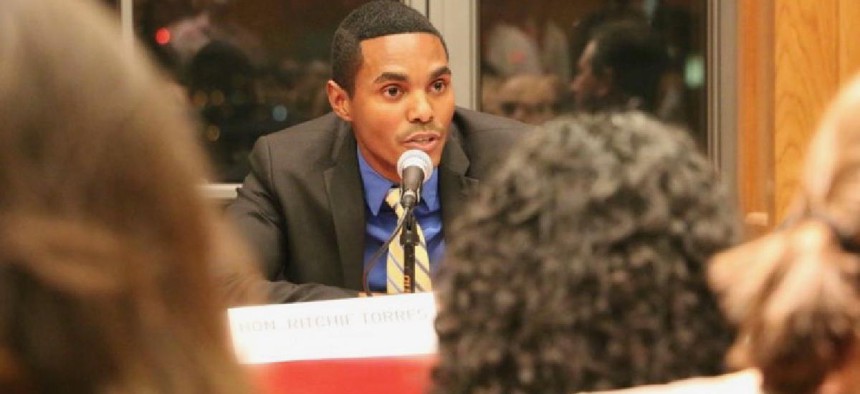New legislation to be considered by the New York City Council would make citizens first responders in addressing the intensifying opioid crisis.
New York City Councilman Ritchie Torres is sponsoring three bills to be unveiled in the joint hearing of the General Welfare and Mental Health, Disabilities and Addiction committees on Tuesday that will offer more resources in combating the crisis.
The first bill would amend the administrative code to require the city to provide training for the public on recognizing opioid overdoses and administering opioid antagonists, or medications which negate or neutralize the effects of opioids. In an interview, Torres compared it to CPR training, in which anyone can volunteer to be trained.
“One need not be a doctor to administer naloxone and one need not be a first responder to save a life,” Torres told City & State. He explained that the training would be voluntary for citizens, but that the city would be required to provide training and naloxone kits, as well as launch a public awareness campaign.
In last year’s legislative session, Torres sponsored legislation requiring the city to provide training for treating opioid overdoses in city shelters.
His second bill to be discussed Tuesday would require the city Department of Social Services to refer non-fatal overdose victims revived by an naloxone in an HIV/AIDS Services Administration facility to additional services. It would also require the city Department of Homeless Services to do the same for overdose victims revived in the city shelter system. Torres said that it is insufficient to simply revive someone, and that there must also be follow-up and preventative care.
“Research tells us that it's not enough to simply administer naloxone, there has to be a connection to longer term services,” he said, adding that the specific follow-up services would be determined by medical professionals.
His final bill would require city agencies to report on the projected number of opioid antagonists they need, as well as the actual number distributed to agencies and citywide opioid overdose prevention programs. Torres said that the purpose of this bill would be to evaluate how “effectively and broadly” naloxone kits are distributed across the city.
Torres’ bills are under pre-consideration, meaning that unlike most bills, they were not introduced in a stated meeting and then considered in a hearing. Instead, the hearing to discuss the legislation comes before it is introduced before the council. Torres said finds this somewhat expedited process promising, as it demonstrates how the topic is “a priority” and the legislation might be enacted more quickly.
“This is probably the single greatest public health crisis affecting our city, so I anticipate nothing short of overwhelming support,” Torres said of his council colleagues.
Torres said that this legislation was created in response to seeing the effects of the opioid crisis in his district in the Bronx, as well as in New York City as a whole. Opioids were largely responsible for the 1,346 overdose deaths in the city in 2016. While preliminary numbers by the NYPD indicate that opioid overdoses began leveling off in 2017, the epidemic has been a scourge of low-income areas of the city, particularly in the Bronx.
“It’s inspired by both the macro and the micro,” he said. “It's been most prevalent in the Bronx, which is hardly an accident that lower-income communities of color are hit the hardest by the opioid crisis.”
Ultimately, Torres wants New Yorkers to recognize that they are able to take action in response to the crisis, with the city’s help.
“Naloxone empowers all of us to be in the business of saving lives in real time,” he said. “The overall message is that the general public can be part of the solution.”
NEXT STORY: The fantasy of the fiscal plan for Puerto Rico


